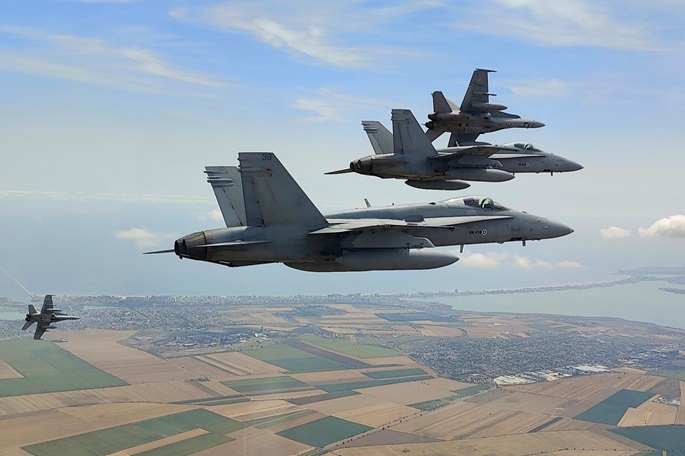Finnish Air Force ends 1st major NATO deployment to Romania
Published : 30 Jul 2024, 02:12
The Finnish Air Force's first major NATO deployment to Romania succeeded as planned and achieved its objectives, said Finnish Defence Forces in a press release on Monday.
F/A-18 Hornet fighter jets returned to Finland on Monday and most of the personnel will return to Finland later this week while and the detachment's material will follow in August.
The deployment of the Finnish F/A-18 Hornet fighter jets to Romania was part of NATO's Air Policing and Air Shielding missions, which strengthen the collective defence and deterrence of the Alliance through an enhanced presence and exercise activity of fighter jets and ground-based air defence units in NATO's eastern member states.
The Finnish Air Force detachment consisted of seven Hornets and about 90 personnel at a time.
The operation was carried out in three rotations and involved a total of about 250 personnel from all Air Force units during the summer.
The aim of rotating the personnel was to gather as much experience as possible of operating under the direction of NATO's military command structure.
“... Being under the direction of NATO's command structure required some minor changes in the planning of flight operations, but we adapted well, and also gained some lessons for developing our operations at home. Cooperation with Allies was smooth and continuous training activity improved our capabilities. What was exceptional for us in Romania was the heat. On several days, the temperature exceeded 40°C, which required our personnel to adapt and develop new ways of working, for example in terms of taking breaks more often,” said Major Toni Vanhatalo, commander of the third and final rotation of the Finnish Air Force detachment.
During June and July, the Finnish F/A-18 Hornet fighter jets were on quick-reaction alert (QRA) duty at Mihail Kogălniceanu Air Base on alternate weeks with the Royal Air Force's (RAF) Typhoon jets. Romania is primarily responsible for surveilling and protecting its own airspace, but the presence of F/A-18s and Typhoons supported the readiness of NATO's collective defence in the Black Sea region. The Finns and the British will hand over the NATO missions in Romania to the Spanish Air Force.
“We had access to NATO's high-quality and comprehensive intelligence on current events in the region, so we were able to prepare for different scenarios and act as the situation required. We carried out the operation as planned without constraints. Operating in Romania did not differ significantly from what we do in Finland, but the proximity of the war also brought different types of flights. Our mission was clear: to protect NATO airspace,” Vanhatalo said.
In early June, immediately after the NATO evaluation was completed, the Finnish Air Force detachment participated in the Ramstein Legacy 24 exercise led by AIRCOM in Romania and Bulgaria.
The exercise involved fighter jets and ground-based air defence units from several NATO member states. The main objective for flying units was to develop interoperability with ground-based air defence. At the Capu Midia firing range, for example, a Romanian Patriot air defence unit took part in the exercise.
During the deployment, the Finnish fighter detachment flew almost every day together with Allies as part of NATO's Air Shielding mission in Romania.
In addition to dissimilar air combat training between different types of fighters, the Finnish fighter pilots also trained together with U.S. joint terminal attack controllers.
At the end of July, the Finnish fighter detachment had the opportunity to train escorting United States Air Force B-52 Stratofortress bombers together with Romanian F-16s. The two bombers arrived at Mihail Kogălniceanu Air Base from Barksdale Air Force Base in Louisiana, training en route with several Allies. The Finnish Air Force's F/A-18 Hornet fighter jets escorted the B-52s, which flew non-stop via the Barents Sea, both in Finnish and Romanian airspace.
“We also flew F/A-18 pilots' national flight training while in Romania. Compared to the Finnish airspace, the training areas in Romania were somewhat smaller, but they were nevertheless adequate and functional for us. All three rotations included young F/A-18 pilots, and we were able to carry out training missions for them as planned and according to our flight training programme. The Finnish Air Force's flight training provides already the young fighter pilots with good skills to operate together with Allies in an international environment,” Vanhatalo added.


